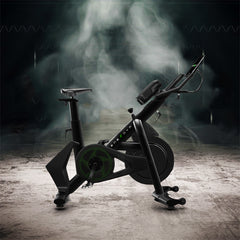How Does Noise Cancelling Work?
What is Noise Cancelling?
All headphones provide some degree of noise cancellation. Whether you wear on-ear, over-ear or in-ear headphones, you’re reducing the level of ambient noise from reaching the ear.
Mental Floss describes it as ‘the slightly more sophisticated technological equivalent of putting your hands over your ears to block out incoming noise’.
Effective noise cancellation lets you listen to sound through your headphones without having to ramp up the volume on your device. This is important because prolonged exposure to loud noise can lead to permanent hearing loss. In 2018, the World Health Organisation (WHO) included the use of headphones on its list of things deemed ‘potentially harmful’ to human health. With more than 1 billion children and young adults at risk of hearing loss through the use of personal devices, it’s easy to see why there’d be a growing demand for noise-cancelling technology.
And it’s not only children and young adults at risk. Many of us will turn up the volume to better hear and enjoy our favourite album, playlist, podcast or audiobook. Modern life is loud. We’d probably all choose to turn up the sound on our devices to counteract aircraft engine noise, commuter bus and train announcements, the buzz-chatter in open-plan offices, the sounds of busy traffic, the noises of a commercial gym and other public places.
Ambient noise isn’t something headphone wearers generally want to have to endure.
How Does Noise Cancelling Technology Work?
There are two types of noise-cancellation: passive and active. Passive noise cancellation is where the headphone cups act as a physical barrier blocking ambient noise. An over-ear headphone can be packed with a heavy-duty foam to reduce incoming sounds. You might also see tips added to earbuds and in-earphones to create the same effect. Passive noise-cancellation is useful but less effective in environments with higher volumes of ambient noise.
Active noise-cancelling (ANC) uses technology and is far more proactive at reducing background noise. Microphones inside the headphone monitor incoming soundwaves and when one is detected it sends out an intercepting wave to disrupt and block the sound.
The How Stuff Works website explains that soundwaves sent out by ANC headphones are 180 degrees out of phase. This means that the ‘amplitude and frequency is the same’ but the crests and waves of the noise are the opposite to the incoming sound. For example, the crest of the ambient sound is high so the crest of the ANC generated soundwave is low. The wave of the ambient sound is low so the wave of the ANC sound is high.
When active-noise cancellation works properly, it blocks or dulls the kind of ambient noises that would ordinarily have us turning up the volume on our devices.
A good example of the differences in the effectiveness of passive and active noise-cancelling headphones is in the story of how the technology was developed. Amar Bose, founder of audio manufacturer Bose, was travelling on a Transatlantic flight in the late 1970s when he realised that he couldn’t clearly hear sounds through his headphones due to the aircraft’s jet engine. Many of us will similarly have struggled with this. The headphones that Amar Bose was wearing would have offered some degree of passive noise-cancellation although, this was patently inadequate. Amar Bose began sketching out ideas during that flight as to how the problem could be solved: was there a way to effectively reduce ambient noise whilst listening through headphones? Around a decade later and the technology was ready: the world had the first active noise-cancelling headphone.
The concepts and ideas behind active noise-cancellation, however, go further back than Amar Bose and that Trans-Atlantic flight. It really starts with Paul Leung. If you’re interested in finding out more about where ANC technology came from, then you can read about it on the Krisp blog.
Adaptive Noise-Cancelling Technology
In recent years, ANC headphones have developed even further. We’re now seeing adaptive noise-cancellation where you can choose whether or not to allow certain ambient sounds through to the ear. On public transport, for example, it might be helpful to hear announcements. In an open-plan office, it could be nice to block out background chatter but to notice and hear when someone is speaking directly to you.
Adaptive noise-cancellation is useful in the gym, too. It means you benefit from a reduction in background noise but you’re still aware of what’s going on around you. Some of the best headphones for bodybuilders now include adaptive noise-cancelling technology.
Back in 2018, Microsoft launched its Surface headphone which includes the option to dial up or dial down noise cancellation. Previously, noise-cancelling headphones only had the option of having the function turned off or turned on. This control may be useful for people worried about exercising safely outdoors. In particular, women who enjoy running outside may feel safer if they are still able to maintain situational awareness when wearing headphones.
Are Active Noise Cancelling Headphones Safe?
There’s no evidence that the inaudible soundwaves used in active noise-cancelling headphones are unsafe. Although, some people have reported feeling dizzy and generally unwell following even short periods of wearing ANC headphones.
A New York Ear, Nose and Throat Doctor told the Wall Street Journal that it could be that very low-frequency vibration could make the brain think that the head is moving (even though the eyes are saying everything is steady). This can cause feelings of what she calls disequilibrium and could cause dizziness in wearers. Countless users of ANC headphones wear them without any problem at all, but it’s very likely that some people will be too sensitive to this low-frequency to be able to wear them for long periods or — in some cases — be able to wear them at all.
Why Do People Wear Noise Cancelling Headphones?
Primarily, to enjoy the sound of their headphones without ambient noise spoiling the experience. Some people wear them to reduce the distraction of public environments: busy libraries, cafes etc or places where there’s a desire to concentrate. They’re particularly popular with travellers as the jet engines on an aircraft can be a real annoyance if you’re hoping to watch a movie or listen to music to pass the time on your journey.
Do Noise Cancelling Headphones Work Without Music?
Headphone manufacturers are now realising that it’s not just music or spoken word programmes and books that make people reach for ANC. More and more users are now wearing them without listening to sound at all. People are using them more as ear-defenders than traditional headphones. Quiet can feel like a premium in urban environments. Whether you’re getting on the bus or train, on the tube in London or the Metro in New York City, noise is everywhere. Prolonged exposure to loud noise — including road noise — can increase a person’s likelihood of having a stroke or heart attack.
Should I wear ANC Headphones in the Gym?
ANC headphones can be very useful in the gym. For a start, you’re not having to listen to the loud-grunters on the weights and you’re not put through the trauma of having to listen to whatever’s being pumped through the sound system. ANC headphones with adaptive technology are probably the thing to go for. We’ve already mentioned Microsoft’s Surface but there’s also Sony’s impressive WH1000XM3 headphones among others to choose from.
Reducing your situational awareness in a public space can be dangerous. We wouldn’t recommend running on a road, for example, with ANC headphones. Hearing and interpreting incoming sounds is one way we’re able to avoid and react to danger so we’d be wary about wearing noise-cancelling headphones in environments where there’s a real danger of harm.
ANC headphones are expensive, too, and sweat is corrosive. You don’t want the cushions flaking and cracking and you certainly don’t want the headphones breaking because moisture got into the internal components. If you are going to wear noise-cancelling headphones during a workout, then make sure you add sweat proof headphone covers to the cushions first.










